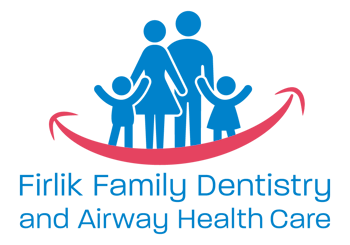Dr. Firlik and her team want you to maintain a healthy smile and will help you achieve that. We are at war with gum disease – also known as periodontal disease. Periodontal disease is a very serious disease. Patients with this disease have deep pockets around their teeth that collect harmful bacteria.
What Can You Do at Home to Prevent Gum Disease?
- Be consistent and brush your teeth twice daily
- Floss your teeth, once daily at least
- See our hygienist and dentist every six months for an oral exam and thorough teeth cleaning
By following these simple steps, you avoid the buildup of plaque and tartar on the surface of your teeth and gums, which cause irritation, swelling, and bleeding.
However, if you are concerned that you have periodontal disease, even at its beginning stage, we will want to discuss that with you.
How Dr. Firlik Diagnoses Gum Disease
Dr. Firlik and our hygienist will examine you for receding gums. They will measure the depth of gingival (gum) pockets around your teeth to determine the existence of periodontal disease. During your exam, they will look for signs of:
- Bleeding
- Swollen gums
- Bone loss
- Loose teeth
If you are found to have periodontal disease, they will discuss the stage of the disease and the recommended treatment for gum disease.
Four Stages of Periodontal Disease
There are four stages which share several common symptoms and which tend to progress from one to the next if not treated properly and quickly.
- Gingivitis: The first stage is a result of plaque buildup around teeth, and it can be reversed if bone damage has not occurred.
- Slight Periodontitis: The second stage is not reversible but can be managed. Routine oral hygiene will not resolve this. Infection usually has spread to the bone, causing bone loss.
- Moderate Periodontitis: At this stage, gingival pocket depth will increase to 6-7 millimeters, allowing for more bacterial damage.
- Advanced Periodontitis: The final stage of periodontal disease involves significant bone loss, swollen gums, and serious health problems.
Treating Periodontal Disease at Firlik Family Dentistry and Airway Health Care
Periodontal disease is often not reversible. Our immediate goal then is to prevent or to minimize its progression. To achieve that, Dr. Firlik offers root planing and scaling treatment to remove tartar and plaque found in and around the gingival pockets of a patient’s teeth. This provides the best chance to slow or stop gum recession.
Dr. Firlik will help you conquer periodontal disease and achieve a much healthier smile.


